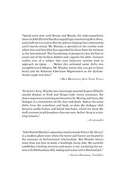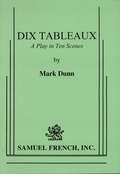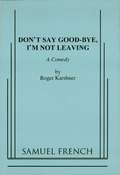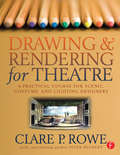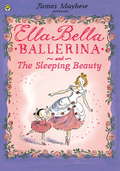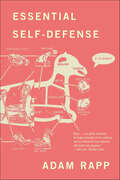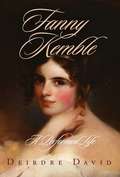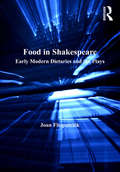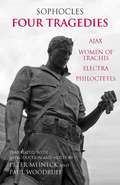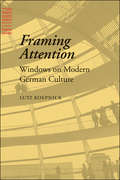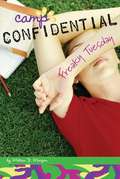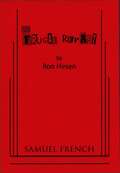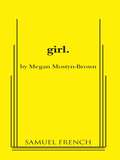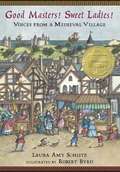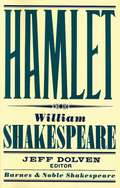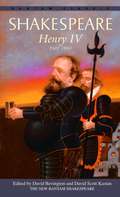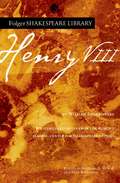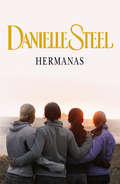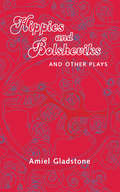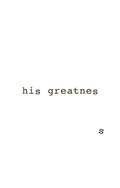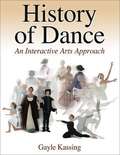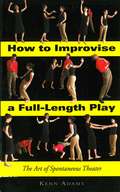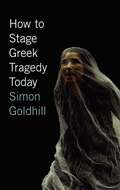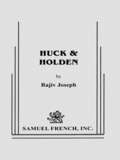- Table View
- List View
Dirty Story and Other Plays
by John Patrick Shanley"In the appallingly entertaining Dirty Story . . . Mr. Shanley has expanded his focus from the intimate to the international to create one of the liveliest, boldest and--against the odds--funniest studies ever of a subject that even hard-core satirists tend to approach on tiptoe."--Ben Brantley, The New York TimesThree new works by Pulitzer Prize-winning author John Patrick Shanley, one of our country's most politically current and theatrically elastic playwrights. In Dirty Story a couple of sadomasochistic writers fight over rights to their New York City loft, in this sexy satire of the Israeli-Palestinian conflict that is "astonishing," says Tony Kushner, "The analysis of the Middle East in this play is dead on, exactly perfectly pitched." In his dark comedy Where's My Money? Shanley takes on marriage, infidelity and divorce lawyers in a play that is "so harsh, it's funny--terrifying, but funny," (The New York Times). And in his Sailor's Song, love becomes an act of courage, in this seaside romance about the certainty of death, the brevity of youth, and the importance of now.John Patrick Shanley's Doubt won the 2005 Pulitzer Prize for Drama and the Tony Award for Best Play, and was chosen as best play of the year by over 10 newspapers and magazines. His other plays include Danny and the Deep Blue Sea, Four Dogs and a Bone, Psychopathia Sexualis and Savage Limbo. He has written extensively for TV and film, including Moonstruck, for which he won an Academy Award for best screenplay.
Dix Tableaux
by Mark DunnComedy / 3f and m/f ensemble or flexible number / Interior / The story of friendship between two women in their sixties is played out over the course of ten years, each year representing another reunion for Beverly Duggins and Addie Spools, two participants in a series of annual "tableaux" sponsored by the Museum of Dix, in a small city in the South. Within human diorama settings as simple as a frontier cabin porch or the cow stall of a local dairy barn, and as elaborate as the "Spit and Curl" beauty salon (circa 1930) and the front seat of Thelma and Louise's plummeting convertible, Beverly, the lonely urban professional, and Addie, the down-home pharmacist's assistant, chart the course of each other's lives, while fending off incursions from the officiously bothersome fellow-poser Maureen. Through the ten scenes which comprise the play, the two women are forced to endure the constant in terruptions of the museum "promenaders" who "ooh" and "ah" at the lifelike presentations, offering up their comical comments, both kind and cruel. Though they see one another only one weekend a year, and in spite of their very different backgrounds, Beverly and Addie nurture a growing and abiding friendship. In the end, it becomes the strongest and most sustaining friendship of their lives.
Don't Say Goodbye, I'm Not Leaving
by Roger KarshnerComedy / 2m, 2f / Simple Sets / Herb has just been admitted to the hospital with a non-specific illness where his wife, Edna, confronts him regarding a will, his options, and insists he see her brother, Bruce, a high-powered attorney. Herb is reluctant, but agrees to see Bruce who, during the confrontational visit, passes out and lapses into a coma. Bruce is now hospitalized and Herb appoints himself as his watch-dog to assure the medical "idiots" don't pull the plug. Herb and Edna invite Bruce's wife, Blanche, to move in with them during Bruce¹s confinement, all agreeing to take round-the-clock shifts with Bruce. After a month, Bruce's condition remains static and the situation becomes stressful, leading to humorous conflict. A human lesson regarding mortality and the inability to change.
Drawing and Rendering for Theatre: A Practical Course for Scenic, Costume, and Lighting Designers
by Clare P. RoweDrawing and Rendering for Theatre, A Practical Course for Scenic, Costume, and Lighting Designers is designed for those of you who are theatrical designers and want to improve your drawing and rendering skills.This gorgeous full-color book includes many examples of student drawings, analyzed and critiqued for areas that need improvement. It also includes numerous examples of design renderings by professional theatrical designers. In addition to the general sections on drawing and painting, it includes separate chapters on costume, scenic, and lighting rendering that include information specific to these design areas.
Ella Bella Ballerina and the Sleeping Beauty (Ella Bella Ballerina #1)
by James MayhewElla Bella longs to be a beautiful ballerina, and so each week she goes to Madame Rosa's ballet class at the old theatre. As we all know, theatres are magical places where anything can happen, and sure enough, as soon as Ella Bella opens Madame Rosa's magical musical box on the empty stage, she's whisked off in a beautiful lilac light to Sleeping Beauty's palace. But will she be able to help the Lilac Fairy save Sleeping Beauty from the bad fairy's wicked spell?
Encyclopedia of Erotic Literature
by John Phillips GaThe Encyclopedia of Erotic Literature is a two-volume work that contains some 540 entries on erotic literature on an international scale. The Encyclopedia has an unprecedented scope, the first scholarly reference resource to bring the field together in all its fascinating variety. The entries examine the history of the literature in different countries and languages from classical antiquity to the present day, individual writers from around the world (not all of them necessarily known as specialist writers of erotic literature), significant works, genres and critical approaches, and general themes pertinent to erotic literature (nudity, prostitution, etc.). The definition of erotic literature is broad, encompassing all the material recognized in the study of the field: not just fiction in all genres (novels, poetry, short stories, drama), but also essays, autobiographies, treatises and sex manuals from different cultures. This Encyclopedia deals with sexually explicit texts characterized by sexual representations and suggestions. All types of sexuality are included. For more information about the title and the editors, go to: http://www.londonmet.ac.uk/news/latest-news/erotic-encyclopedia-edited-by-london-met-professor.cfm/
Essential Self-Defense: A Play
by Adam RappThe next work for the stage from the Pulitzer finalist Adam Rapp, Essential Self-Defense.In Essential Self-Defense, disgruntled misfit Yul Carroll takes a job as an attack dummy in a women's self-defense class and finds himself mysteriously drawn to Sadie, the repressed bookworm mercilessly honing her skills on him. Meanwhile, all's not well on the unassuming Midwestern streets of Bloggs: with local children vanishing at an alarming rate, our hero, his lady friend, and a motley assortment of poets, butchers, and punk librarians prepare to battle the darkness on the edge of town.
Fanny Kemble
by Deirdre DavidA ForeWord magazine Book of the Year for 2007Charismatic, highly intelligent, and splendidly talented, Fanny Kemble (1809-93) was a Victorian celebrity, known on both sides of the Atlantic as an actress and member of the famous Kemble theatrical dynasty, as a fierce opponent of slavery despite her marriage to a wealthy slave owner, as a brilliantly successful solo performer of Shakespeare, and as the author of journals about her career and life on her husband's Georgia plantations. She was, in her own words, irresistible as a "woman who has sat at dinner alongside Byron . . . and who calls Tennyson, Alfred."Touring in America with her father in the early 1830s, Kemble impulsively wed the wealthy and charming Philadelphia bachelor Pierce Butler, beginning a tumultuous marriage that ended in a sensational divorce and custody battle fourteen years later. At the time of their marriage, Kemble had not yet visited the vast Georgia rice and cotton plantations to which Butler was heir. In the winter of 1838, they visited Butler's southern holdings, and a horrified Kemble wrote what would later be published on both sides of the Atlantic as Journal of a Residence on a Georgian Plantation. An important text for abolitionists, it revealed the inner workings of a plantation and the appalling conditions in which slaves lived. Returning to England after her divorce, she fashioned a new career as a solo performer of Shakespeare's plays and as the author of memoirs, several travel narratives and collections of poems, a short novel, and miscellaneous essays on the theater. For the rest of her life, she would divide her time between the two countries.In the various roles she performed in her life, on stage and off--abolitionist, author, estranged wife--Kemble remained highly theatrical, appropriating and subverting nineteenth-century prescriptions for women's lives, ever rewriting the roles to which she was assigned by society and inheritance. Hers was truly a performed life, and in the first Kemble biography in twenty-five years to examine that life in its entirety, Deirdre David presents it in all its richness and complexity.
Food in Shakespeare: Early Modern Dietaries and the Plays (Literary And Scientific Cultures Of Early Modernity Ser.)
by Joan FitzpatrickA study of common and exotic food in Shakespeare's plays, this is the first book to explore early modern English dietary literature to understand better the significance of food in Shakespearean drama. Food in Shakespeare provides for modern readers and audiences an historically accurate account of the range of, and conflicts between, contemporary ideas that informed the representations of food in the plays. It also focuses on the social and moral implications of familiar and strange foodstuff in Shakespeare's works. This new approach provides substantial fresh readings of Hamlet, Macbeth, As you Like It, The Winter's Tale, Henry IV Parts 1 and 2, Henry V, Titus Andronicus, Coriolanus, Pericles, Timon of Athens, and the co-authored Sir Thomas More. Among the dietaries explored are Andrew Boorde's A Compendyous Regyment or a Dyetary of Healthe (1547), William Bullein's The Gouernement of Healthe (1595), Thomas Elyot's The Castle of Helthe (1595) and Thomas Cogan's The Hauen of Health (1636). These dieteries were republished several times in the early modern period; together they typify the genre's condemnation of surfeit and the tendency to blame human disease on feeding practices. This study directs scholarly attention to the importance of early modern dietaries, analyzing their role in wider culture as well as their intersection with dramatic art. In the dietaries food and drink are indices of one's position in relation to complex ideas about rank, nationality, and spiritual well-being; careful consumption might correct moral as well as physical shortcomings. The dietaries are an eclectic genre: some contain recipes for the reader to try, others give tips on more general lifestyle choices, but all offer advice on how to maintain good health via diet. Although some are more stern and humourless than others, the overwhelming impression is that of food as an ally in the battle against disease and ill-health as well as a potential enemy.
Four Tragedies: Ajax, Women of Trachis, Electra, Philoctetes
by Sophocles Paul Woodruff Peter MeineckMeineck and Woodruff's new annotated translations of Sophocles' Ajax, Women of Trachis, Electra, and Philoctetes combine the same standards of accuracy, concision, clarity, and powerful speech that have so often made their Theban Plays a source of epiphany in the classroom and of understanding in the theatre. Woodruff's Introduction offers a brisk and stimulating discussion of central themes in Sophoclean drama, the life of the playwright, staging issues, and each of the four featured plays.
Framing Attention: Windows on Modern German Culture (Parallax: Re-visions of Culture and Society)
by Lutz KoepnickIn Framing Attention, Lutz Koepnick explores different concepts of the window—in both a literal and a figurative sense—as manifested in various visual forms in German culture from the nineteenth century to the present. He offers a new interpretation of how evolving ways of seeing have characterized and defined modernity.Koepnick examines the role and representation of window frames in modern German culture—in painting, photography, architecture, and literature, on the stage and in public transportation systems, on the film screen and on television. He presents such frames as interfaces that negotiate competing visions of past and present, body and community, attentiveness and distraction. From Adolph Menzel's window paintings of the 1840s to Nam June Paik's experiments with television screens, from Richard Wagner's retooling of the proscenium stage to Adolf Hitler's use of a window as a means of political self-promotion, Framing Attention offers a theoretically incisive understanding of how windows shape and reframe the way we see the world around us and our place within it.
Freaky Tuesday (Camp Confidential #17)
by Melissa J. MorganBrynn's just transferred to a brand-new school in a town close by. A town in Bizarro World, that is, where academic excellence is the fast track to popularity and Candace yes, quiet, seemingly insecure Candace is the reigning queen bee.
Frugal Repast
by Ron HirsenDramatic Comedy / 4m, 4f, 1m Child / Interior / It is 1913 in Paris, where renowned art dealer Ambroise Vollard has just published “The Frugal Repast,” an edition of etchings by Pablo Picasso, the rising young star of the Paris art world. The art dealer entertains his dinner guests Gertrude Stein, Alice B. Toklas, and Guillaume Apollinaire, along with Picasso, and they engage in lively and urbane repartee. The two impoverished circus performers depicted in “The Frugal Repast” see the etching on display in the window of Vollard’s gallery and determine to steal it for ransom. If the artist can make money from stealing their faces, they say, then they can make money by stealing his print. The circus acrobats cleverly use their aerial skills to perform a stunning theft of the print, leaving in its place a ransom note asking for a thousand francs. Vollard, merely amused by the theft, replaces the stolen print with another one from the same edition. The ransom note, the duplicate prints, a mysterious invitation, and a delicious chicken curry all provoke both laughter and thought as the haves and have-nots wrestle over the value of art—and of life itself.
Girl
by Megan Mostyn-BrownA play about what it means to be a "girl" in this day and age. The girls in this play show great strength, revealing their vulnerabilities in language that is honest and extremely compelling. Split into three sections, the characters speak entirely in monologues (with some overlap), providing great material for auditions and monologue work.
Good Masters! Sweet Ladies! Voices From a Medieval Village
by Laura Ann SchlitzStep back to an English village in 1255, where life plays out in dramatic vignettes illuminating twenty-two unforgettable characters.<P><P> Maidens, monks, and millers’ sons — in these pages, readers will meet them all. There’s Hugo, the lord’s nephew, forced to prove his manhood by hunting a wild boar; sharp-tongued Nelly, who supports her family by selling live eels; and the peasant’s daughter, Mogg, who gets a clever lesson in how to save a cow from a greedy landlord. There’s also mud-slinging Barbary (and her noble victim); Jack, the compassionate half-wit; Alice, the singing shepherdess; and many more. With a deep appreciation for the period and a grand affection for both characters and audience, Laura Amy Schlitz creates twenty-two riveting portraits and linguistic gems equally suited to silent reading or performance. Illustrated with pen-and-ink drawings by Robert Byrd — inspired by the Munich-Nuremberg manuscript, an illuminated poem from thirteenth-century Germany — this witty, historically accurate, and utterly human collection forms an exquisite bridge to the people and places of medieval England.<P> A Newbery Award book.
Hamlet (Barnes and Noble Shakespeare)
by William Shakespeare Jeff DolvenHamlet, by William Shakespeare, is part of the Barnes & Noble Shakespeare series. Shakespeare’s compelling treatment of guilt and revenge in Hamlet has fascinated playgoers and readers for 400 years. The editor, Jeff Dolven, brings a professional poet’s eye to the introduction and notes, providing a uniquely informative take on the play.
Henry IV, Part Two: King John; Taming Of The Shrew; Henry Iv, Part One; Henry Iv, Part Two (classic Reprint)
by William ShakespeareThe stirring continuation of the themes begun in Henry IV, Part One again pits a rebellion within the State and that master of misrule, Falstaff, against the maturing of Prince Hal. Alternating scenes between bawdy tavern and regal court, between revelry and politics, Shakespeare probes at the sources, uses, and responsibilities of power as an old king dies and a young king must choose between a ruler's solemn duty and a merry but dissipated friend, Falstaff. The play represents Shakespeare at the peak of his maturity in writing historical drama and comedy.From the Paperback edition.
Henry VIII (Folger Shakespeare Library)
by William Shakespeare Paul Werstine Barbara MowatIn Henry VIII, Shakespeare presents a monarchy in crisis. Noblemen battle with Lord Chancellor Cardinal Wolsey, who taxes the people to the point of rebellion. Witnesses whom Wolsey brings against the Duke of Buckingham claim he is conspiring to take the throne, yet Buckingham seems innocent as he goes to his death. Henry is also without a male heir. After meeting the beautiful Anne Bullen, he says that he suspects his current marriage to Katherine, with whom he has one surviving daughter, is invalid. Katherine, meanwhile, glows with such splendid integrity that actresses have long desired the role. She advocates for the people, suspects the witnesses against Buckingham, and eloquently defends her conduct as Henry’s wife. The authoritative edition of Henry VIII from The Folger Shakespeare Library, the trusted and widely used Shakespeare series for students and general readers, includes: -Freshly edited text based on the best early printed version of the play -Full explanatory notes conveniently placed on pages facing the text of the play -Scene-by-scene plot summaries -A key to the play’s famous lines and phrases -An introduction to reading Shakespeare’s language -An essay by a leading Shakespeare scholar providing a modern perspective on the play -Fresh images from the Folger Shakespeare Library’s vast holdings of rare books -An annotated guide to further reading Essay by Barbara A. Mowat The Folger Shakespeare Library in Washington, DC, is home to the world’s largest collection of Shakespeare’s printed works, and a magnet for Shakespeare scholars from around the globe. In addition to exhibitions open to the public throughout the year, the Folger offers a full calendar of performances and programs. For more information, visit Folger.edu.
Hermanas
by Danielle SteelCandy, Tammy, Sabrina y Annie. Cuatro hermanas que, a pesar de haberse labrado su futuro en ciudades muy distantes, han conseguido mantenerse unidas a lo largo de los años. Uno de sus rituales es la celebración del Cuatro de Julio, para la que siempre se reúnen en la casa familiar. Hasta que en uno de estos encuentros la tragedia sacude su hogar: su madre muere en un accidente de coche y una de las hermanas, Annie, se queda ciega a causa de las heridas.A partir de este momento deberán aunar sus fuerzas para sobrellevar este amargo golpe del destino. Annie es pintora y ha de asimilar la terrible realidad de que jamás volverá a dedicarse a los pinceles. Su padre, quien parece haber perdido el juicio tras la muerte de su esposa, necesitará a sus cuatro hijas más de lo que jamás había imaginado. Y las otras tres hermanas esconden muchas más debilidades de las que han dejado traslucir en estos últimos años#Hermanas es una reflexión sobre la fragilidad de la vida, pero también sobre el precioso regalo que esta supone para cada uno de nosotros. En ella Danielle Steel presenta a cuatro personajes que saben enfrentarse con voluntad férrea a sus debilidades y a las trampas del destino, para alcanzar su felicidad y la de sus seres queridos.«Una novela reposada y agradable sobre los lazos femeninos.»Kirkus Reviews
Hippies and Bolsheviks and Other Plays: and Other Plays
by Amiel GladstoneHippies and Bolsheviks and Other Plays collects three works by one of Canada's dramatic luminaries.'Hippies and Bolsheviks' is set in that hotbed of hippie idealism, 1970s British Columbia. Young Star stumbles home from a Led Zeppelin concert with a draft dodger and sets in motion a crisis of love and of faith in their idealism against the Establishment.'In Lena's Car', a woman whose marriage is on the verge of collapse reflects on how it got to that point, harkening back to a youth when things were both more simple and more complicated.'>In The Wedding Pool', a group of dissatisfied single friends decide to each contribute fifty dollars a month to a pool to be collected by the first one to marry. But when one of the friends starts dating the bank teller who opens their account, the others are forced to confront their ideas about loneliness and personal responsibility.'The Wedding Pool is a particularly smart and entertaining example of the thirty-something angst genre.' - The Globe and Mail 'If Hippies and Bolsheviks is any indication of the quality of work at this year's playrites Festival, Calgary theatregoers are in for a phenomenal month.' - Calgary Sun.
His Greatness
by Daniel MacIvorThree men, a great American playwright, his trusted and loyal assistant, and a young Canadian street hustler, find themselves together for two days in a hotel room in Vancouver. This is the story about the nature of life in a created world. Inspired by a potentially true story about the great American playwright...
History Of Dance: An Interactive Arts Approach
by Gayle KassingHistory of Dance: An Interactive Arts Approach provides an in-depth look at dance from the dawn of time through the 20th century. Using an investigative approach, this book presents the who, what, when, where, why, and how of dance history in relation to other arts and to historical, political, and social events. In so doing, this text provides a number of ways to create, perceive, and respond to the history of dance through integrated arts and technology. This study of dancers, dances, and dance works within an interactive arts, culture, and technology environment is supported by the National Standards in dance, arts education, social studies, and technology education. History of Dance: An Interactive Arts Approach has four parts. Part I explains the tools used to capture dance from the past. Part II begins a chronological study of dance, beginning with its origins and moving through ancient civilizations and the Middle Ages through the Renaissance. Part III covers dance from the 17th to the 20th century, including dance at court, dance from court to theater, romantic to classical ballet, and dance in the United States. Part IV focuses on 20th-century American dance, highlighting influences on American ballet and modern dance as it emerged, matured, and evolved during that century.
How to Improvise a Full-Length Play: The Art of Spontaneous Theater
by Kenn AdamsForget the script and get on the stage! In How to Improvise a Full-Length Play, actors, playwrights, directors, theater-group leaders, and teachers will find everything they need to know to create comedy, tragedy, melodrama, and farce, with no scripts, no scenarios, and no preconceived characters. Author Kenn Adams presents a step-by-step method for long-form improvisation, covering plot structure, storytelling, character development, symbolism, and advanced scene work. Games and exercises throughout the book help actors and directors focus on and succeed with cause-and-effect storytelling, raising the dramatic stakes, creating dramatic conflict, building the dramatic arc, defining characters, creating environments, establishing relationships, and more. How to Improvise a Full-Length Play is the essential tool for anyone who wants to create exceptional theater.
How to Stage Greek Tragedy Today
by Simon GoldhillFrom the stages of Broadway and London to university campuses, Paris, and the bourgeoning theaters of Africa, Greek tragedy remains constantly in production. This global revival, in addition to delighting audiences, has highlighted both the promise and the pitfalls of staging ancient masterpieces in the modern age. Addressing the issues and challenges these performances pose, renowned classicist Simon Goldhill responds here to the growing demand for a comprehensive guide to staging Greek tragedy today. In crisp and spirited prose, Goldhill explains how Aeschylus, Euripides, and Sophocles conceived their works in performance and then summarizes everything we know about how their tragedies were actually staged. The heart of his book tackles the six major problems facing any company performing these works today: the staging space and concept of the play; the use of the chorus; the actor’s role in an unfamiliar style of performance; the place of politics in tragedy; the question of translation; and the treatment of gods, monsters, and other strange characters of the ancient world. Outlining exactly what makes each of these issues such a pressing difficulty for modern companies, Goldhill provides insightful solutions drawn from his nimble analyses of some of the best recent productions in the United States, Britain, and Continental Europe. One of the few experts on both Greek tragedy and contemporary performance, Goldhill uses his unique background and prodigious literary skill to illuminate brilliantly what makes tragedy at once so exciting and so tricky to get right. The result will inspire and enlighten all directors and performers—not to mention the growing audiences—of ancient Greek theater.
Huck & Holden
by Rajiv JosephFull Length, Comedy \ 3m, 2f \ Unit set \ Receiving rave reviews for both its New York and Los Angeles productions, Rajiv Joseph's Huck & Holden tells the story of Navin, an Indian college student who's fresh off the boat and trying to remain focused on his studies while the temptations of America and college life start beating down his door. When Navin falls for Michelle, a young African-American woman, he finds that his perceptions of the world begin to expand-- and crumble. Called "...a comingof-age story with comedy, pathos, and a distinct emotional core," by offoffline.com, Huck & Holden is a romantic comedy that wrestles with cultural stereotypes, racism, The Kama Sutra, The Catcher in the Rye, and how losing our innocence doesn't always make us wiser. \ "Joseph's writing has the smarts and sophistication to rip away stereotypes while revealing his characters' raw humanity. With simple storytelling, he deftly constructs Navin's coming-of-age story with comedy, pathos, and a distinct emotional core. This is theater at its finest, and theater that maters.... Everything in this highly polished production cries out for mention, but at the heart of it all is Joseph's taut, masterful script." --offoffonline.com
